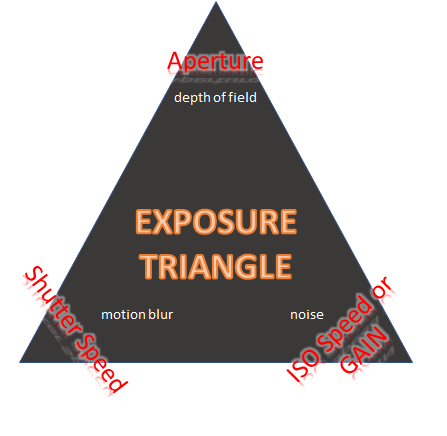Glossary |
Equinox (astronomy) |
updated: 2021-08-09 |
The exposure triangle
describes the relation between aperture, exposure time and ISO speed

Stops is a common term in photography. Each stop means halving or doubling the amount of light collected by the camera.
Typical stops used in photography
- Aperture stops (of f-stops): f/1.4, f/2, f/2.8, f/4, f/5.6, f/8, f/11, f/16, f/22
- ISO-stops (typical): 100, 200, 400, 800, 1600, 3200, 6400
- Shutter speed: (in seconds): 1, 1/2, 1/4, 1/8, 1/15, 1/30, 1/60, 1/125, 1/250, 1/500, 1/1000, 1/2000, ...
Each stop change is a factor of 2 in light, so you need to adjust the exposure time by a factor of 2 to compensate.
Examples:
- f/2 and 1/100 second corresponds with f/4 and 1/25 second (2 stops difference)
- f/11 and ISO400 correlates f/5.6 and ISO100 (also 2 stops).
- Each of these settings on the left would achieve the same exposure results.
For more details see
- Shutter-Speed-Chart-Dave-Morrow-Photography.pdf (davemorrowphotography.com)
- What is a "Stop" of Exposure in Photography? | Photography Mad
Created with the Personal Edition of HelpNDoc: Effortlessly upgrade your WinHelp HLP help files to CHM with HelpNDoc
